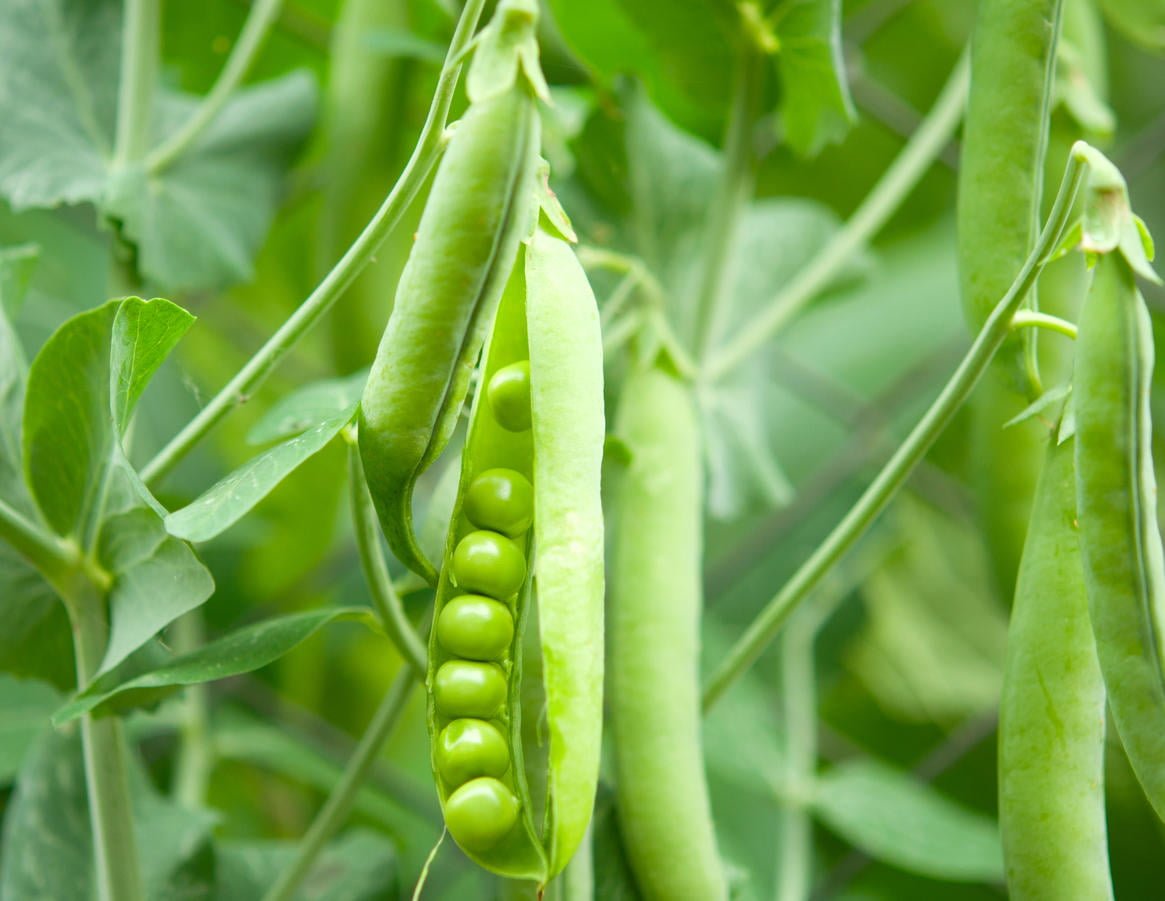
Pea (Latin: Pisum) is a self-pollinating herbaceous annual plant of the legume family. Native to Southwest Asia, where it was cultivated in the Stone Age. Herbaceous pea stalks reach a length of up to 250 cm (8.2 ft). The petioles of the leaves end in tendrils that cling to the support and hold the plant in an upright position.
Peas (and other legumes) are an excellent siderate, they enrich the soil with nitrogen. In the area of the roots (and stems) of plants, useful microorganisms develop that are able to absorb atmospheric nitrogen and accumulate it in the soil.
Sowing and growing peas
There are no special difficulties, but there are several important points that should be taken into account:
The best precursors for peas, cucumbers, pumpkins, potatoes, and cabbage, and peas are the best precursors for any crop. I will tell you a little secret — in vegetables that are grown near peas, you should make potash and phosphorus fertilizers, then its fruits will be more tender. According to my personal observations, on the site that you have just fertilized, growing peas is impractical — it will go to the tops, and the pods will be very small.
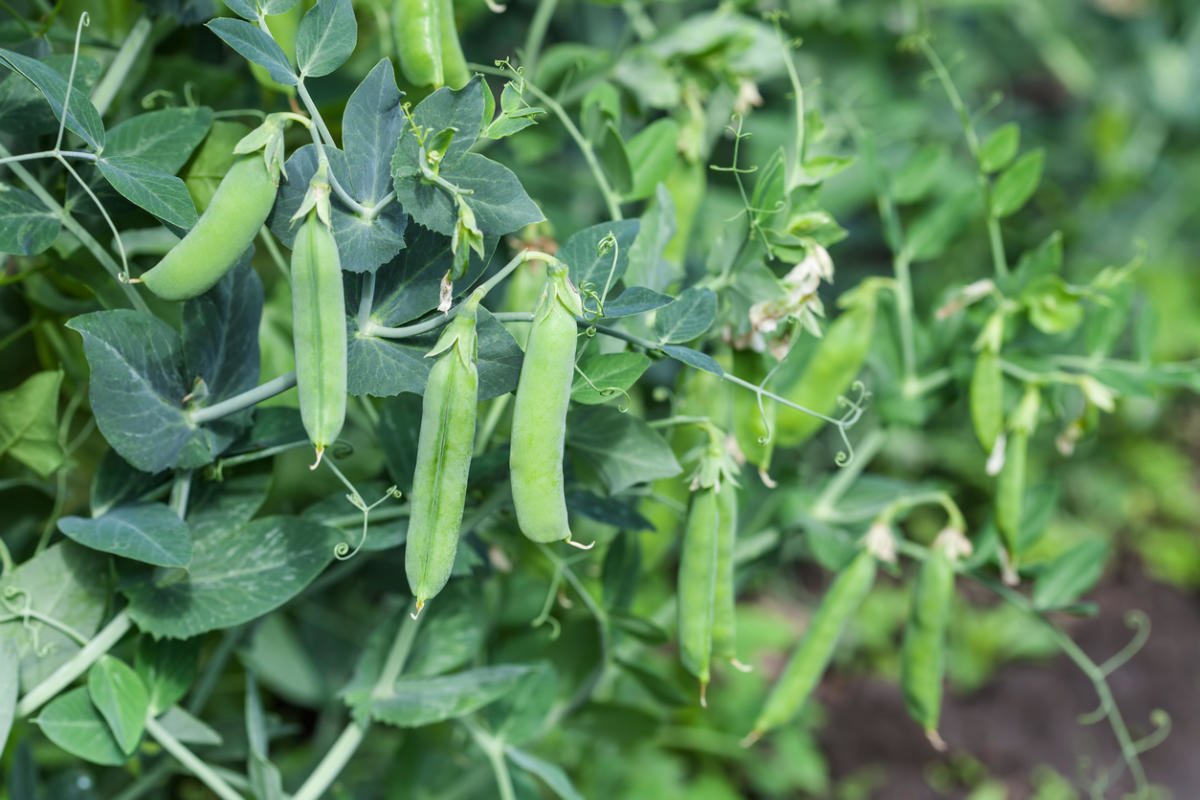
In the spring, just before planting, I additionally add only compost, 15 g (0.5 oz) of urea and half a teaspoon of boric acid per 1 sq. m. directly into the furrow.
The time of sowing
Summer sowing of peas can be done until July 10, but this applies only to early-maturing varieties.
Requirements for soil and light conditions
Peas love fertile soil and just absolutely do not tolerate poor soils and an excess of readily available nitrogen, keep this in mind when sowing. Peas are also quite demanding for lighting, so try to place them in full sun, best protected from the winds.
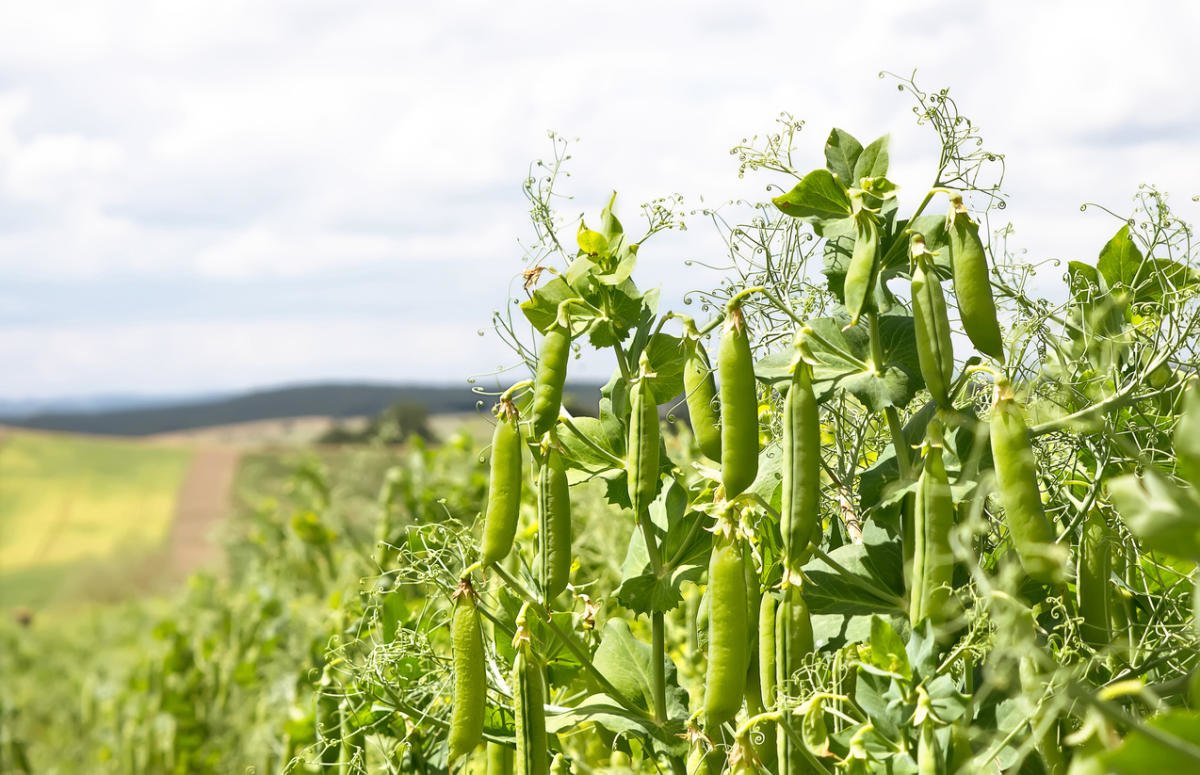
Sowing peas in different parts of the garden, one of the best harvests I collected when I planted it in the trunks of young apple trees. Their crowns were small, so light peas were enough, and this neighborhood was good for the apple trees-the soil, enriched with nitrogen, was moist.
Presowing treatment of seeds
You can sow peas not only with sprouted, but also with dry seeds. I, for example, warm up the seeds before sowing, lowering them for 5 minutes in a hot (about 40 °C/104°F) solution of boric acid (2 g/0.07 oz of acid per 10 liters of water). Thanks to this simple pretreatment method, the likelihood of plant damage is significantly reduced.
Proces setí
I use a flat hoe and make a furrow about 20-25 cm (7.9-9.8 in) wide, keeping the distance between the rows 50-60 cm (1.6-2 ft) (or equal to the height of the plants indicated on the package). Fill the furrow with compost, mix with the soil. Next, at a distance of about 5 cm (2 in) from each other, we lay the peas, sprinkle it with earth, and tamp the earth well on top. Bury the pea seeds to a depth of about 3-5 cm (1.2-2 in), depending on the soil. For example, on clay, you need to plant deeper, and on light sandy soils, the seeds are buried less.
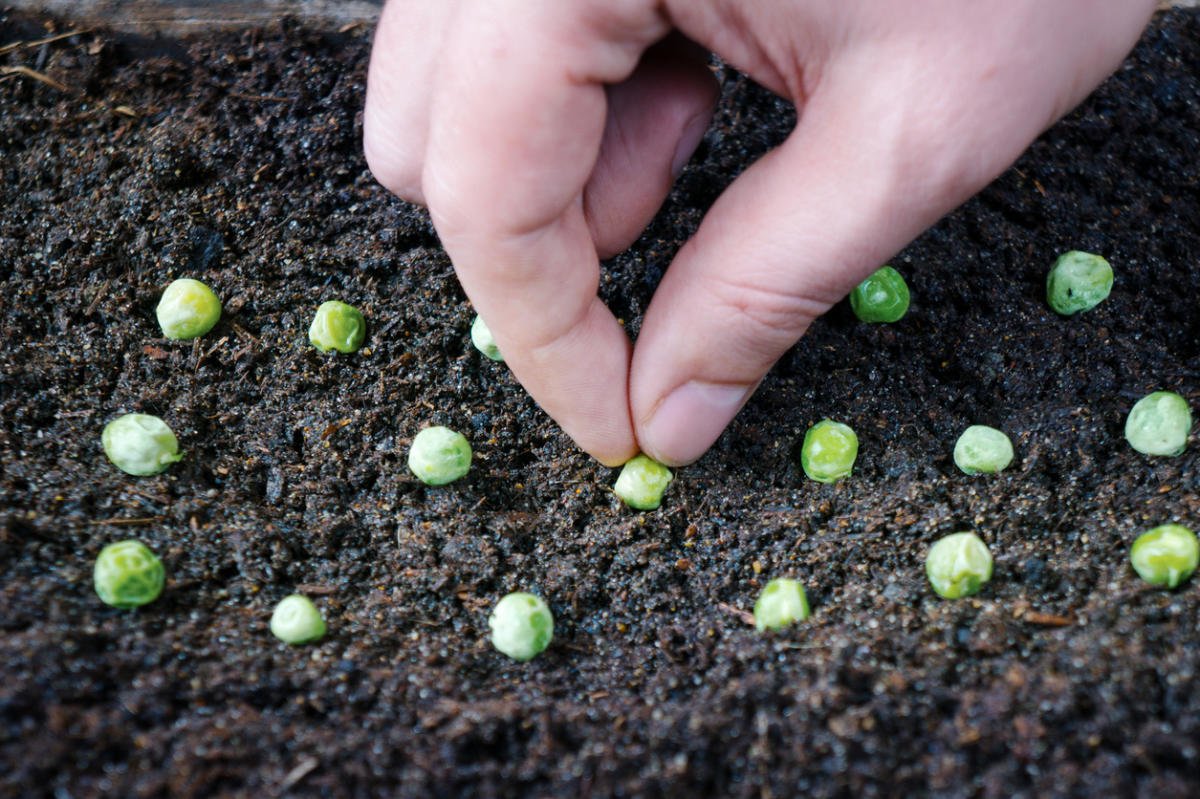
The seeding rate is about 80-130 seeds per 1 sq. m. Pea seedlings usually appear 6-15 days after sowing.
Caring for peas
Caring for peas will not give you much trouble, as it consists only in covering the seedlings, weeding, watering and, of course, timely harvesting.
Protecting seedlings from birds
As soon as the first shoots appear, they need to be protected from birds: I cover them with ordinary fishing nets.
Watering and feeding
Repeatedly growing peas, I noticed that the plant simply does not tolerate heat, so in dry weather it needs to be watered very abundantly, 9-10 liters of water per 1 sq.m., preferably combined with additives. Immediately after watering, the soil around the peas should be mulched. It is advisable to loosen the row spacing, especially in the initial period of growth, that is, the pea plant makes a slide.
Construction support
Peas need to grow and columns, immediately after sowing, I drive the stakes at a distance of a meter from each other, to which a special metal mesh with large cells (about 10×10 cm/3.9×3.9 in) is attached, in the future it will become a good support for pea shoots.
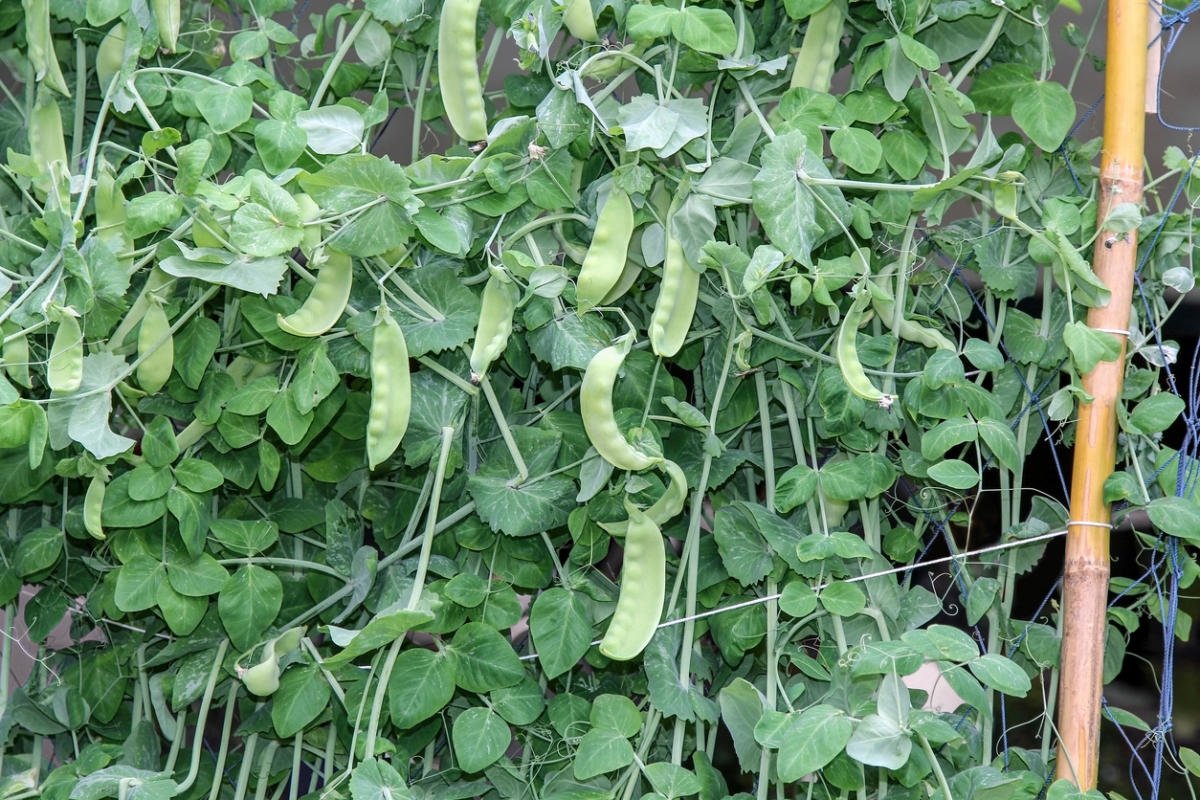
Peas bloom in 28-60 days after sowing. About a month after flowering, I start to harvest, which, by the way, stimulates the growth of peas. The fruiting period is quite long: about 33-42 days. I will tell you frankly: during the season of last year, observing the correct agricultural techniques of cultivation, I collected about 4 kg (8.8 lb) of peas from 1 sq. m, which made me very happy.
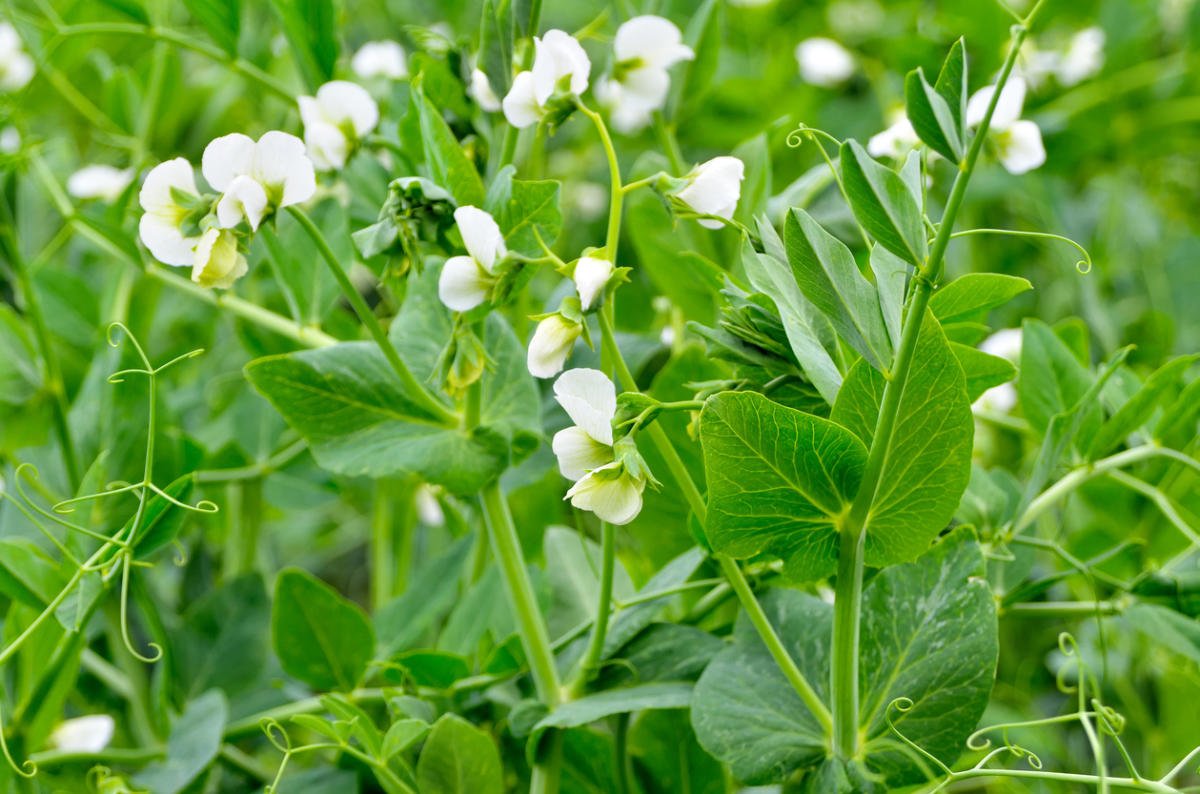
If your goal is not to get green beans, and you want mature beans, the peas should be left on the bush until the pods at the bottom are fully ripe. Then cut the plant at the roots, tie it in small bundles and hang it for one and a half to two weeks in a ventilated room. Remember that the seeds remain viable for 2 years.
After the harvest, the peas are harvested, I cut off the tops and put them in a compost pile, and the roots are simply cut off and buried directly in the ground-sacrificing fertilizers. By the way, this fertilizer not only replaces manure, but also significantly increases the fertility of the soil, while improving the structure.
Peas are incredibly useful in crop rotation, but despite the fact that it perfectly enriches and improves the soil, it can be sown in the same place no earlier than 5 years. Otherwise, you risk exposing the plant to various diseases.
Pests and diseases of peas
Perhaps the most vicious enemy of peas is the Tortricidae, or Laspeyresia nigricana, whose larvae are found in the soil. The departure of Laspeyresia nigricana moths from the cocoon, as a rule, just coincides with the beginning of pea flowering. Each butterfly lays about two hundred eggs on leaves, beans, stems, and flowers. After about a week, small caterpillars emerge from them, which, once in the beans, eat the peas, and the gardeners are left without a crop.
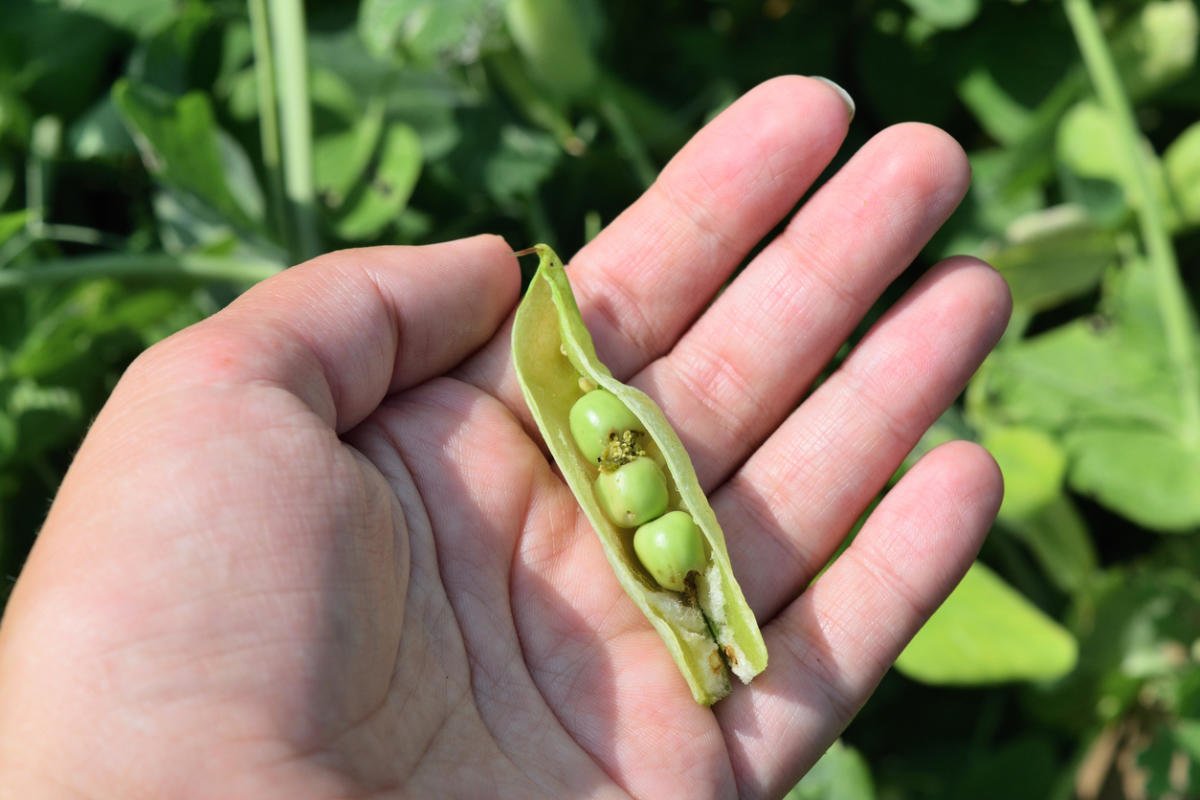
There are many methods to combat laspeyresia nigricana, but I use only a couple that I will share with you:
- Method 1: periodically spray the plants with an infusion of tomato leaves. For cooking, take about 3 kg (6.6 lb) of leaves per 10 liters of water.
- Method 2: processing peas with garlic infusion. For cooking, take 20 g (0.7 oz) of finely grated (or crushed) garlic, pour 10 liters of water, insist overnight. The infusion is filtered and sprayed with pea plants.
Very well works, by the way, tomato-garlic infusion and from such a pest as acyrtosiphon pisum.
A fairly common disease of peas is considered powdery mildew. I prefer to fight with an infusion of field thistle: 300 g (10.6 oz) of the plant’s leaves are infused overnight in a bucket of water. Spray the peas, which are extracted twice with an interval of 7-8 days.
Varieties of peas
PISUM SATIVUM ‘ADAGUMSKIY’
One of my favorite medium-ripened varieties, the fruits of which have high taste qualities and are excellent for canning.

The height of the plant is up to 80 cm (2.6 ft). Mature pea seeds are green-yellow.
PISUM SATIVUM ‘VERA’
An early variety, it has an excellent taste, is suitable for fresh use and for processing. The growing season is about 47-60 days.
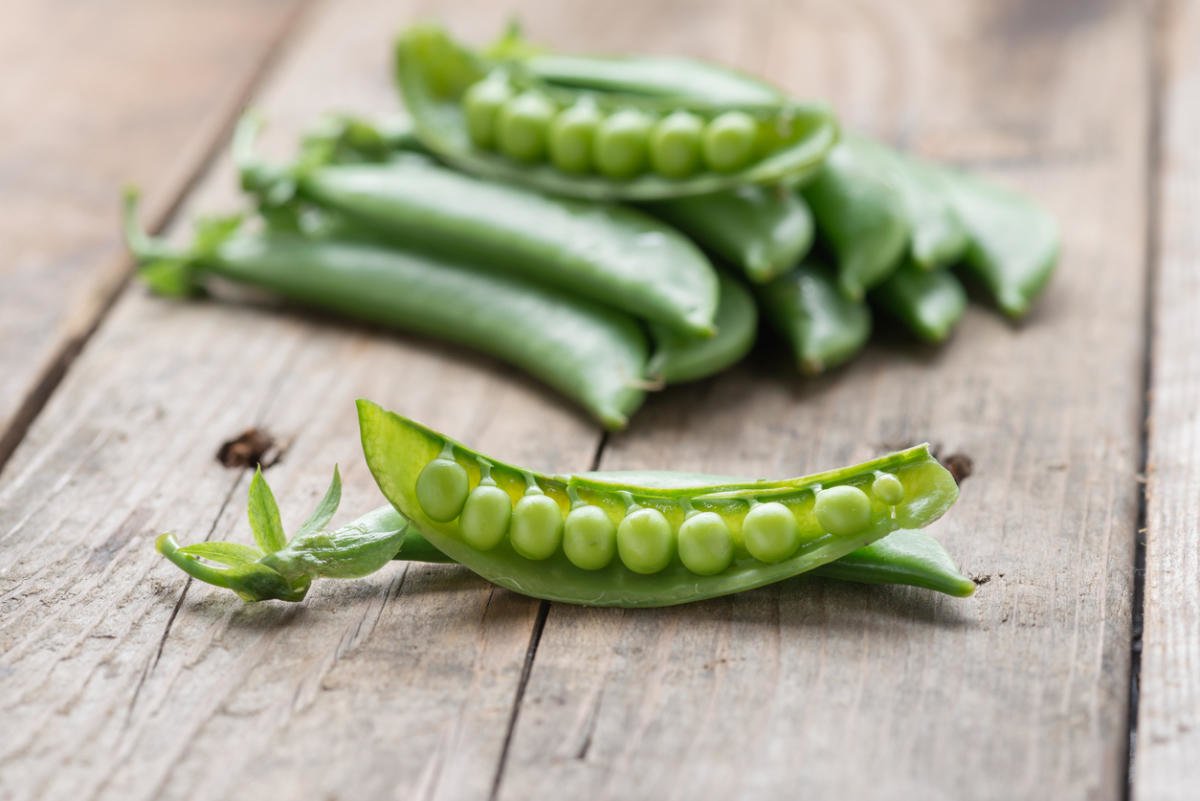
The stem is up to 65 cm (2.1 ft) high, the pod is straight or slightly curved, a strong parchment layer. May be slightly damaged by Laspeyresia nigricana. The variety is valuable for stable yield, resistant to lodging.
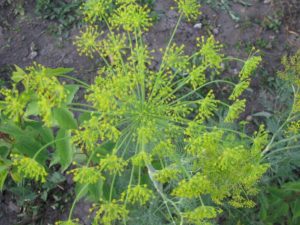
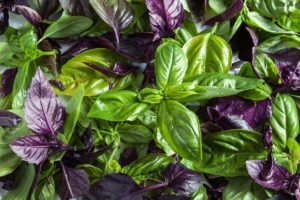


Leave a Reply